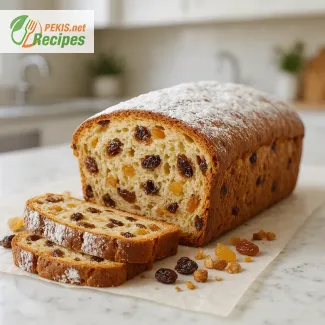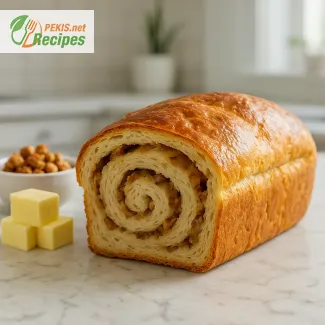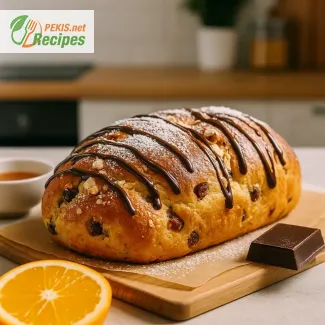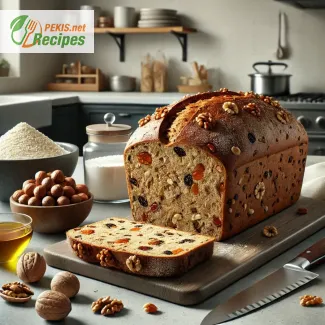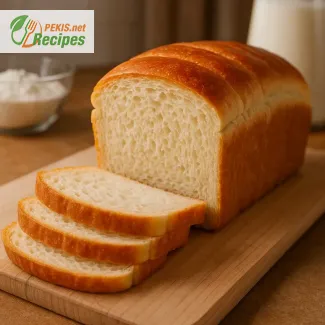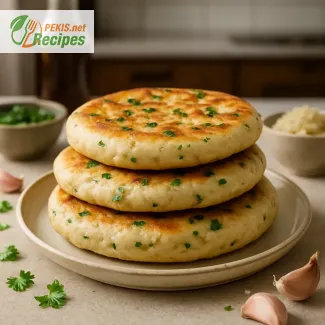
Irresistibly Moist Banana Loaf You’ll Bake Again and Again
The comforting aroma and rich texture of a timeless banana bread classic
There are few things as comforting and nostalgic as the smell of freshly baked banana bread wafting through your kitchen. Whether enjoyed warm with a pat of butter, paired with a morning coffee, or served as an afternoon treat, banana bread is more than just a way to use up overripe bananas — it’s a celebration of simplicity, flavor, and the kind of homemade goodness that brings people together. This version of the beloved banana loaf strikes the perfect balance between moist texture, subtle sweetness, and that tender crumb everyone hopes for in a homemade bake.
Why banana bread continues to be a timeless favorite
The enduring popularity of banana bread recipes lies in their versatility and their deeply satisfying flavor profile. A ripe banana transforms an ordinary batter into a golden, aromatic loaf that's soft, luscious, and lightly caramelized on the edges. Its adaptable base welcomes an array of add-ins — think chopped walnuts, dark chocolate chips, or even a swirl of cinnamon — yet it's also perfectly delightful in its most classic form.
What makes this particular banana loaf recipe stand out is its simplicity. It doesn’t require fancy techniques or rare ingredients. All you need are a few pantry staples, very ripe bananas, and a loaf pan. The result is a banana bread that’s indulgently moist, never dry or crumbly, and stays soft for days — if it lasts that long.
What makes this banana loaf recipe so moist and flavorful
The secret to this moist banana bread lies in the careful combination of ingredients. Using overripe bananas, mashed to just the right consistency, ensures natural sweetness and moisture. A splash of vanilla extract adds a gentle depth, while brown sugar enhances the caramel-like notes and tender crumb. The recipe avoids overmixing, which is key to maintaining that soft and airy texture.
Butter, used in just the right amount, gives the loaf richness without overpowering the banana flavor. For a hint of tang and enhanced rise, a touch of baking soda paired with yogurt or buttermilk works wonders. These elements come together to create a loaf that’s golden-brown on the outside, tender and moist within, and just sweet enough to be irresistible without being cloying.
A loaf that fits any occasion – from breakfast to dessert
One of the best things about a banana loaf is its incredible versatility. It works as a quick breakfast, a snack on the go, or a cozy dessert after dinner. It also stores beautifully and can be sliced and frozen, ready to enjoy whenever a craving strikes. A thick slice can be toasted and topped with butter, cream cheese, or even a dollop of nut butter for an extra indulgent twist.
Its homemade feel makes it a welcome gift as well — wrap it in parchment and tie with twine, and you’ve got the perfect gesture of warmth and kindness. Whether served to family, friends, or simply savored in a quiet moment alone, banana bread offers comfort, nourishment, and that unmistakable taste of something lovingly baked from scratch.
The perfect texture and flavor — every single time
This banana bread recipe has been tested and refined to guarantee consistent, delicious results. You can expect a loaf that rises beautifully, slices cleanly, and delivers on flavor in every bite. The banana flavor is rich yet not overpowering, with subtle hints of vanilla and caramel woven throughout the soft crumb. It’s the kind of loaf that disappears fast, often eaten by the second day — though it’s just as delightful when made ahead.
The crust, a light golden brown, offers just enough structure to hold the tender interior. And that banana aroma, especially when the loaf is still warm from the oven, is nearly impossible to resist. If you’re looking for a banana bread that’s both foolproof and deeply satisfying, this recipe is exactly what you need.
Ideal for beginners and seasoned bakers alike
You don’t need to be an expert to master this easy banana bread recipe. With straightforward steps, accessible ingredients, and clear results, it’s an excellent introduction for new bakers. At the same time, it’s rewarding enough for experienced home cooks who appreciate the subtle art of baking a perfect loaf.
Whether it’s your first time baking banana bread, or your fiftieth, this recipe will likely become your go-to. It brings together everything we love about this classic: the rich banana flavor, the soft and moist interior, and the warm, familiar scent of a kitchen filled with love and homemade delight.
- Preheat your oven to 175°C (350°F). Grease a loaf pan (about 23 x 13 cm / 9 x 5 inches) with butter or line with parchment paper.
- Mash the bananas in a large bowl using a fork until smooth.
- Add eggs to the mashed bananas and whisk until well combined.
- Pour in the melted butter, milk, and vanilla extract. Mix until fully incorporated.
- In a separate bowl, combine flour, baking soda, cinnamon, and salt.
- Gradually fold dry ingredients into the wet banana mixture. Do not overmix – stir until just combined.
- Add brown sugar and gently stir until evenly distributed.
- Pour the batter into the prepared loaf pan and smooth the top with a spatula.
- Bake for 50 minutes, or until a toothpick inserted into the center comes out clean.
- Cool in the pan for 10 minutes, then transfer to a wire rack to cool completely before slicing.
Elevating Your Banana Bread: Creative Tweaks and Common Mistakes to Avoid
Expert insights to take your homemade banana loaf from good to exceptional
Banana bread is a comfort classic — easy to prepare, versatile, and always a crowd-pleaser. But even with a simple recipe, there’s plenty of room to enhance flavor, texture, and nutritional value. Whether you're an experienced baker or new to the kitchen, understanding how each ingredient and step contributes to the final result can make the difference between a decent loaf and an unforgettable one. This guide dives into practical ways to improve your banana bread recipe with smart ingredient swaps, flavor additions, and baking techniques.
The role of bananas: ripeness matters
When it comes to banana bread, the bananas themselves are the star. Using very ripe bananas, with skins that are mostly brown or black, is essential. At this stage, bananas are sweeter and softer, which adds both flavor and moisture to your loaf. For even better results, mash your bananas but leave a few small chunks for pockets of pure banana flavor throughout the bread.
If you don’t have ripe bananas, a quick fix is to roast them in the oven at 150°C (300°F) for 15–20 minutes with the peel on. This method helps develop natural sugars and mimics the texture of overripe bananas.
Sweetness control: sugar choices and alternatives
The classic recipe uses brown sugar for a warm, molasses-like sweetness, which also contributes to a soft texture. If you want to experiment, try using:
- Coconut sugar – for a subtle caramel note with a lower glycemic index
- Maple syrup or honey – adds moisture and a distinct depth
- Applesauce – not only sweetens, but also reduces the need for added fat
These alternatives can make banana bread healthier without sacrificing flavor. However, if using a liquid sweetener, slightly reduce the amount of milk or butter to keep the batter from becoming too loose.
Fats and flavor: butter vs. oil vs. dairy-free
Butter adds richness and a subtle savory note, while neutral oils like canola or sunflower result in a moister crumb and extend shelf life. For an extra boost in nutrition and flavor, consider:
- Greek yogurt – for added protein and tanginess
- Sour cream – makes the bread tender and adds depth
- Coconut oil – gives a hint of tropical aroma
Each fat source influences the mouthfeel and flavor, so choose based on what you're aiming to highlight — richness, softness, or balance.
Flour options and gluten-free swaps
Traditional banana bread calls for all-purpose flour, but incorporating alternative flours can make the loaf more nutritious:
- Whole wheat flour – adds fiber and a nutty flavor, best used in a 50/50 ratio with white flour to maintain tenderness
- Spelt flour – easier to digest and adds a subtle sweetness
- Oat flour – naturally gluten-free and offers a mild taste
For a gluten-free version, use a 1:1 gluten-free baking blend with xanthan gum for structure. Always monitor the batter consistency when swapping flours, as some may absorb more liquid than others.
Egg alternatives and plant-based baking
Eggs help bind the ingredients and provide lift. For a vegan or egg-free banana bread, try these substitutes:
- Flax eggs (1 tbsp ground flaxseed + 3 tbsp water = 1 egg)
- Chia eggs (same ratio as flax, with a gel-like consistency)
- Mashed avocado or applesauce – both add creaminess and structure
These options not only eliminate allergens, but also contribute unique flavors and textures.
Add-ins that take your loaf to the next level
If you’re ready to move beyond the classic, the right mix-ins can make your banana loaf stand out:
- Chopped nuts – like walnuts or pecans, add crunch and earthiness
- Dark chocolate chunks – create indulgent pockets of richness
- Dried fruits – raisins, cranberries, or dates offer bursts of sweetness
- Spices – cinnamon is common, but try nutmeg, cardamom, or ginger for complexity
Be careful not to overload the batter. Keep total add-ins under 150 g (1 cup) to avoid weighing down the loaf.
Why homemade always beats store-bought
Preparing banana bread at home allows full control over ingredients, freshness, and flavor. Store-bought options often include preservatives, excess sugar, and artificial flavors. Homemade bread is:
- More customizable – adjust sweetness, flour type, and spices
- Fresher and healthier – no additives or trans fats
- Satisfying to make – the baking process itself is enjoyable and rewarding
Plus, the aroma that fills your kitchen while baking is reason enough to skip the prepackaged versions.
Common baking mistakes and how to avoid them
Even seasoned bakers can run into issues. Here are frequent pitfalls and tips to fix them:
- Dry texture – caused by overbaking or too much flour. Always spoon flour into the measuring cup and level it off, don’t pack it.
- Dense loaf – often from overmixing. Mix until just combined.
- Sunken middle – usually from underbaking or too much leavening. Check for doneness with a toothpick and avoid opening the oven door too early.
- Uneven baking – make sure the oven is fully preheated and place the loaf in the center of the oven.
Storing and serving for maximum enjoyment
After cooling, banana bread can be wrapped tightly and stored at room temperature for 3–4 days. For longer storage, freeze individual slices wrapped in foil and placed in a freezer-safe bag.
Serving ideas include:
- Toasted with a pat of salted butter
- Spread with cream cheese or almond butter
- Served alongside yogurt and berries for a wholesome breakfast
Making banana bread part of a balanced lifestyle
Banana bread can be both indulgent and nutrient-dense, depending on your ingredient choices. Adding fiber-rich flours, healthy fats, and reducing added sugars allows this treat to fit well into various dietary preferences.
Whether you’re tweaking the classic or creating something new, banana bread is a canvas for flavor, texture, and creativity. Each adjustment is an opportunity to tailor this comfort food to your taste, health goals, and lifestyle.
Allergens present in the recipe:
- Gluten (all-purpose flour)
- Eggs
- Milk (butter and whole milk)
Suggestions for allergen-free substitutions:
- Gluten-free alternative: Replace all-purpose flour with a certified gluten-free 1:1 flour blend.
- Dairy-free: Use plant-based butter and milk (e.g., almond, oat, or soy milk).
- Egg-free: Replace each egg with 60 g (¼ cup) unsweetened applesauce or 1 tbsp ground flaxseed mixed with 3 tbsp water (per egg).
- Vitamin B6: 0.4 mg – Supports brain health and energy metabolism.
- Vitamin C: 5 mg – Boosts immune system and aids iron absorption.
- Potassium: 270 mg – Helps regulate blood pressure and muscle function.
- Magnesium: 25 mg – Supports nerve function and bone health.
- Iron: 0.7 mg – Important for oxygen transport in the blood.
- Calcium: 20 mg – Necessary for strong bones and teeth.
- Phenolic compounds from bananas: ~150 mg – Help combat oxidative stress and support cellular repair.
- Cinnamon polyphenols: ~20 mg – Aid in reducing inflammation and regulating blood sugar.
- Vitamin E (from butter): ~0.3 mg – Protects cell membranes and supports immune function.
